Ditapis dengan

Transport integration tools for supply chain management
Over the last 3 years, research carried out by Cardiff University has studied the opportunities to integrate freight transport better into supply chains. The paper stems from this work. After asserting the principal reasons why better transport integration is important, it charts a range of diagnostic tools that were deployed. The tools represent a menu of instruments that aim to aid understand…
- Edisi
- Vol. 9, No. 1, March 2006, 57–74
- ISBN/ISSN
- 1746-8809
- Deskripsi Fisik
- 19 p.
- Judul Seri
- International Journal of Logistics Research and Applications
- No. Panggil
- ATC MG STE t C.1
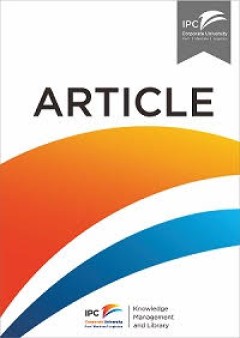
Port-centric logistics, dry ports and offshore logistic hubs- strategies to o…
- Edisi
- Vol 39 Issue: 2, pp. 207-226
- ISBN/ISSN
- 0308–8839
- Deskripsi Fisik
- -
- Judul Seri
- Maritime Policy & Management: The flagship journal of international shipping and port research
- No. Panggil
- ATC PO MON p
- Edisi
- Vol 39 Issue: 2, pp. 207-226
- ISBN/ISSN
- 0308–8839
- Deskripsi Fisik
- -
- Judul Seri
- Maritime Policy & Management: The flagship journal of international shipping and port research
- No. Panggil
- ATC PO MON p

New Models for Sustainable Logistics Internalization of External Costs in Inv…
Logistics of transport systems is a key driver for the growth of whatever economy. Freight transport allows production systems or common citizens to receive or send materials or finished goods required by processes as well as by everyday life However, the overall transport sector accounts worldwide for more than half of global liquid fossil fuels consumptions which, in turn, is responsible for …
- Edisi
- 2015
- ISBN/ISSN
- 978-3-319-19710-4
- Deskripsi Fisik
- 111P
- Judul Seri
- New Models for Sustainable Logistics
- No. Panggil
- ATC MG DIG n
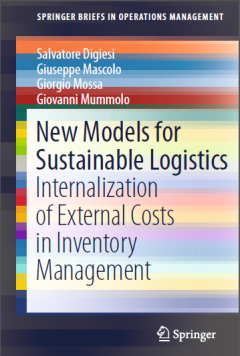
New models for sustainable logistics: internalization of external costs in in…
- Edisi
- -
- ISBN/ISSN
- 978-3-319-19710-4
- Deskripsi Fisik
- -
- Judul Seri
- -
- No. Panggil
- TXT LO DIG n
- Edisi
- -
- ISBN/ISSN
- 978-3-319-19710-4
- Deskripsi Fisik
- -
- Judul Seri
- -
- No. Panggil
- TXT LO DIG n
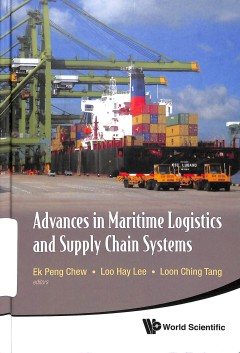
Advances in Maritime Logistik and Supply Chain Systems
This timely book discusses the recent developments in maritime logistics, an important specialized area for the global economy. It includes issues such as the recent economic crisis, port competition and development, and provides insights and trends relating to these issues. Consisting of renowned researchers worldwide, the primary objective of the book identifies some of the new problems and c…
- Edisi
- -
- ISBN/ISSN
- 13-978-981-4329-85-9
- Deskripsi Fisik
- xvi, 315 p. ; 26 cm.
- Judul Seri
- -
- No. Panggil
- TXT LO SON m

Institutional challenges to intermodal transport and logistics : governance i…
While the operational realities of intermodal transport are relatively well known, the institutional challenges are less well understood. This book provides an overview of intermodal transport and logistics including the policy background, emerging industry trends and academic approaches. Establishing the three key features of intermodal transport geography as intermodal terminals, inland logis…
- Edisi
- -
- ISBN/ISSN
- 978-1-4724-2321-4
- Deskripsi Fisik
- xx, 219 p., 23 cm
- Judul Seri
- -
- No. Panggil
- TXT LO MON i
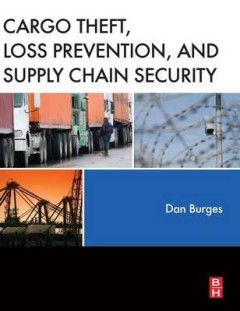
Cargo Theft, Loss Prevention, And Supply Chain Security
Part history of cargo theft, part analysis and part how-to guide, this book is the one source you need to in order to understand every facet of cargo theft and take steps to prevent losses. It supplies a massive amount of cargo theft statistics and provides solutions and best practices to supply chain security. Providing you with cutting-edge techniques so you can prevent losses, this book will…
- Edisi
- -
- ISBN/ISSN
- 978-0-12-416007-1
- Deskripsi Fisik
- xx, 366p. ; 25cm.
- Judul Seri
- -
- No. Panggil
- TXT LO BUR c C.1
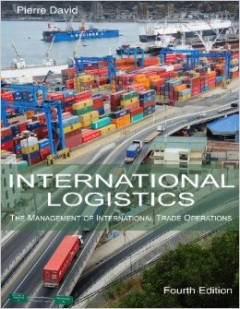
International Logistics: The Management of International Trade Operations
A full-color textbook covering all of the concepts of international logistics. This textbook is written from the perspective of the users, those managers who are actively exporting or importing goods or are otherwise involved in international trade operations. All of the relevant issues are thoroughly explained, including documentation, terms of payment, terms of trade (2010 Incoterms rules), e…
- Edisi
- 4th ed.
- ISBN/ISSN
- 978-0-9894906-0-3
- Deskripsi Fisik
- xxvi, 695p. ; 28cm.
- Judul Seri
- -
- No. Panggil
- TXT LO DAV i

An automated system for motor carrier selection
- Edisi
- Vol. 103 Iss 7 pp. 533 - 539
- ISBN/ISSN
- 0263-5577
- Deskripsi Fisik
- 9 p.
- Judul Seri
- Industrial Management & Data Systems
- No. Panggil
- ATC LO KUO a
- Edisi
- Vol. 103 Iss 7 pp. 533 - 539
- ISBN/ISSN
- 0263-5577
- Deskripsi Fisik
- 9 p.
- Judul Seri
- Industrial Management & Data Systems
- No. Panggil
- ATC LO KUO a

Locating dry ports on a network : a case study on Tianjin port
A mathematical model for optimizing the location of dry ports is developed. The objective is to minimize the sum of the transportation costs and the fixed facility opening/closing costs. Unlike previous research on this subject, the possibility of closing existing dry ports is investigated. The dry port location problem is formulated as an integer programming and it is shown that the CFLP is a …
- Edisi
- -
- ISBN/ISSN
- 0308-8839
- Deskripsi Fisik
- 19 p.
- Judul Seri
- -
- No. Panggil
- ATC PO HUA l
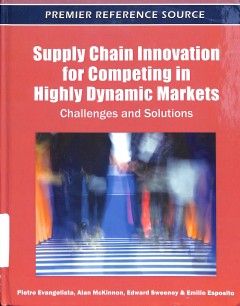
Supply Chain Innovation For Competing In Highly Dynamic Markets : Challenges …
Rapid changes in technological development are forcing businesses to continuously innovate to improve their competitiveness, which is particularly evident in logistics and supply chain management (SCM), where innovation impacts both the strategic and operational levels. Supply Chain Innovation for Competing in Highly Dynamic Markets: Challenges and Solutions investigates the role of innovation…
- Edisi
- -
- ISBN/ISSN
- 978-1-60960-585-8
- Deskripsi Fisik
- xiv, 343 p, 29 cm
- Judul Seri
- -
- No. Panggil
- TXT LO EVA s
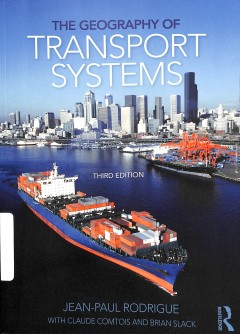
The geography of transport systems
The geography of transport systems is now into its third edition,. substantial efforts have been made to build on the first and second editions' success by improving the content and this structure.
- Edisi
- 3rd Ed.
- ISBN/ISSN
- 978-0-415-82254-1
- Deskripsi Fisik
- 411 p., 23 cm
- Judul Seri
- -
- No. Panggil
- TXT LO ROD g
Multimodal transport
- Edisi
- Ed. 3
- ISBN/ISSN
- 987-981-4342-28-5
- Deskripsi Fisik
- 220 p.
- Judul Seri
- -
- No. Panggil
- TXT LO CHO m
- Edisi
- Ed. 3
- ISBN/ISSN
- 987-981-4342-28-5
- Deskripsi Fisik
- 220 p.
- Judul Seri
- -
- No. Panggil
- TXT LO CHO m

The logistics and supply chain toolkit : over 90 tools for transport, warehou…
- Edisi
- -
- ISBN/ISSN
- 978-0-7494-6808
- Deskripsi Fisik
- xi, 313 p, 22 cm
- Judul Seri
- -
- No. Panggil
- LO RIC t
- Edisi
- -
- ISBN/ISSN
- 978-0-7494-6808
- Deskripsi Fisik
- xi, 313 p, 22 cm
- Judul Seri
- -
- No. Panggil
- LO RIC t

Warehouse management
To paraphrase Mark Twain, rumours of the demise of warehousing have been greatly exaggerated. The warehouse continues to play a major role within supply chains and will continue to do so for the foreseeable future, although it may appear in different guises. The introduction of concepts such as Just in Time suggested the requirement for warehouses as large storage entities was a thing of the pa…
- Edisi
- -
- ISBN/ISSN
- 978 0 7494 6074 7
- Deskripsi Fisik
- xvii. 317p
- Judul Seri
- -
- No. Panggil
- TXT LO RIC w

The well planned menu – logistics for an airline catering company
Describes the successful implementation by a major airline′s catering division of a comprehensive, computer‐controlled logistics system comprising two separate, fully automated warehousing and ordering systems, making order error a rarity and enabling three‐shift operation which has significantly increased profitability.
- Edisi
- Vol. 8 Issue: 3, pp.43-44
- ISBN/ISSN
- -
- Deskripsi Fisik
- 41 p.
- Judul Seri
- Logistics Information Management
- No. Panggil
- ACT LO SZY t
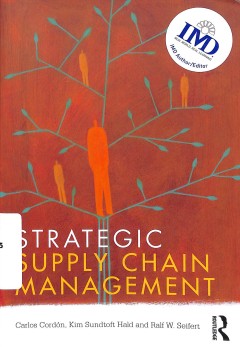
Strategic supply chain management
The supply chain is at the heart of every successful business organization's decision-making process. This textbook explains how to create a winning supply chain management strategy by spotlighting how senior executives in European and US companies have turned their supply chains into strategic weapons designed to convert threats, risks and outside pressures into competitive advantages. Strate…
- Edisi
- -
- ISBN/ISSN
- 978-0-415-59176-8
- Deskripsi Fisik
- ix, 278 p., ; 24 cm
- Judul Seri
- -
- No. Panggil
- LC 658.785 COR s

Managing logistics and supply chain challenges : singapore insights and persp…
Strategically located in Asia, Singapore has built on its geographical advantage to become one of the world s leading logistics hubs and a preferred location for leading manufacturers to establish regional distribution centres. Its world-class infrastructure, excellent connectivity, efficient customs, pro-business environment, educated workforce and stable government have made Singapore a compe…
- Edisi
- -
- ISBN/ISSN
- 978-981-4524-865
- Deskripsi Fisik
- xx, 467 p, 23 cm
- Judul Seri
- -
- No. Panggil
- LC 658.785 WEN m

Warehousing management : a complete guide to improving efficiency and minimiz…
Warehouses are an integral part of the modern supply chain, involved in sourcing, producing and distributing goods. However, due to the complexities of warehouse operations they can often be one of the most costly parts of the supply chain. Their efficient management is therefore critical for minimizing cost and contributing to an effective and efficient supply chain. Warehouse Management pro…
- Edisi
- -
- ISBN/ISSN
- 978-0-7494-60747
- Deskripsi Fisik
- xvi, 324 p., ; illus : 23 cm
- Judul Seri
- -
- No. Panggil
- LC 658.785 RIC w
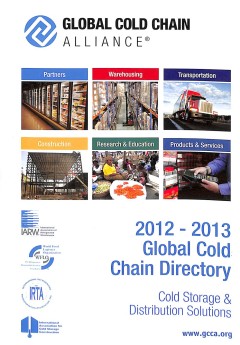
Global cold chain directory 2012 - 2013 : cold storage & distribution solution
Global cold chain directory 2012 - 2013 : cold storage & distribution solution
- Edisi
- -
- ISBN/ISSN
- -
- Deskripsi Fisik
- 464 p., 26 cm
- Judul Seri
- -
- No. Panggil
- LC 388.0425 GLO g
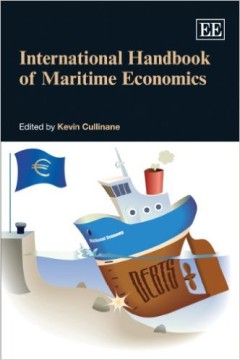
International Handbook of Maritime Economics
This timely and comprehensive new Handbook brings together an unrivaled group of distinguished scholars and practitioners to provide in-depth analysis and a contemporary perspective on a wide-ranging array of topics in maritime economics. Inherently global in nature, the economics of the maritime sector has proved pivotal in facilitating globalization and international trade. This HandbOOK o…
- Edisi
- -
- ISBN/ISSN
- 978-1-84720-933-7
- Deskripsi Fisik
- xix, 497 hlm., 21 cm
- Judul Seri
- -
- No. Panggil
- TXT MR CUL i

THE ROLE OF TRANSPORTATION IN LOGISTICS CHAIN
The operation of transportation determines the efficiency of moving products. The progress in techniques and management principles improves the moving load, delivery speed, service quality, operation costs, the usage of facilities and energy saving. Transportation takes a crucial part in the manipulation of logistic. Reviewing the current condition, a strong system needs a clear frame of logist…
- Edisi
- Vol. 5, pp. 1657 - 1672, 2005
- ISBN/ISSN
- 1657 - 1672
- Deskripsi Fisik
- 16 p.
- Judul Seri
- Proceedings of the Eastern Asia Society for Transportation Studies
- No. Panggil
- ATC LO TSE t

Unified heuristics to solve routing problem of reverse logistics in sustainab…
A reverse logistics problem, motivated by many real-life applications, is examined where bottles/cans in which products are delivered from a processing depot to customers in one period are available for return to the depot in the following period. The picked-up bottles/cans need to be adjusted in the place of delivery load. This problem is termed as simultaneous delivery and pick-up problem wit…
- Edisi
- Vol. 41, No. 3, March 2010, 337–351
- ISBN/ISSN
- 1464–5319
- Deskripsi Fisik
- 16 p.
- Judul Seri
- International Journal of Systems Science
- No. Panggil
- ATC LO ANB u

The Third-Party Logistics Services and Globalization of Manufacturing
Cross-border production chains of manufacturing require coordination and logistics. Third-party logistics services have thus taken this role as a link in the globalization of economic activities. Distriparks, a provider of total logistics to manufacturing, have emerged in Singapore to offer customized distribution and inventory management. Established as a traditional entrepoˆt by internationa…
- Edisi
- Vol. 7, No. 1, 89–104, 2002
- ISBN/ISSN
- 1469-9265
- Deskripsi Fisik
- 18 p.
- Judul Seri
- International Planning Studies
- No. Panggil
- ATC LO ZHU t

The modelling of factors determining the goods and traffic flows movement in …
The purpose of this atticle is to model the factors determining the goods traffic along the logistical channels located in various geopolitical regions on the basis of the transport network. The attention is focused on theoretical presumption of logistical channels formation in a logistical system. In this modeling the factors which determine the formation of the goods flow along the subsystems…
- Edisi
- 2003, Vol XVIII. No 1, 18-22
- ISBN/ISSN
- 1648-3480
- Deskripsi Fisik
- 6 p.
- Judul Seri
- Transport
- No. Panggil
- ATC LO JAR t

The Limits of Public Policy Intervention in Urban Logistics: Lessons from Vic…
For over 15 years, the subject of urban logistics has preoccupied many stakeholders, including both private and public decision-makers. The purpose of this paper is to present a study of the limits of public policy regulations restricting vehicle access to limited traffic zones to promote the use of urban consolidation centres (UCCs). After examining the main technical and economic aspects of i…
- Edisi
- Vol. 21, No. 10, 1528–1541
- ISBN/ISSN
- -
- Deskripsi Fisik
- 15 p.
- Judul Seri
- European Planning Studies
- No. Panggil
- ATC LO VIL t

The Coming of Age of Business Logistics
This study reviews the admission criteria for a "nontraditional" MBA program by investigating a group of students who in academia. This article reviews past and current trends in the discipline of logistics and reports on the growing placement opportunities for students with degrees in business logistics as more firms create formal logistics organizations and solicit college graduates with cour…
- Edisi
- -
- ISBN/ISSN
- -
- Deskripsi Fisik
- 5 p.
- Judul Seri
- Journal of Education for Business
- No. Panggil
- ATC LO RUS t

System reliability for a multistate intermodal logistics network with time wi…
Network structures have been diffusely adopted in logistics systems, where the most critical target is completing the delivery within the promised timeframe. This paper focuses on a single commodity in a multistate intermodal logistics network (MILN) with transit stations and routes to involve three parameters: a route’s capacity, delivery time and time window. There is a carrier along each r…
- Edisi
- 2016
- ISBN/ISSN
- 1366-588X
- Deskripsi Fisik
- 14 p.
- Judul Seri
- International Journal of Production Research
- No. Panggil
- ATC LO LIN s

Sustainability assessment of food chain logistics
Food chain logistics plays an important role in the sustainability performance of the food sector. Therefore, project SCALE (Step Change in Agri-food Logistics Ecosystems) started as a collaborative international project, aiming for tools and frameworks for the food sector to make a step change in operational practices. A sustainability framework is introduced to propose a structured and ration…
- Edisi
- Vol. 18, No. 2, 101–117
- ISBN/ISSN
- 1469-848X
- Deskripsi Fisik
- 18 p.
- Judul Seri
- International Journal of Logistics Research and Applications
- No. Panggil
- ATC LO BLO s

Research on public logistics centre as tool for cooperation
This paper focuses on logistics centre concept and benefits for users. Intermodal benefit, forwarders impact, IT solutions, new transport flows due to synergy, better supply chain management, additional services, cost sharing, economies of scale, quality of the services, know-how, joint marketing impact, and benefit for growth of third-party logistics services are presented. The main bottleneck…
- Edisi
- 2007, Vol XXII, No 1, 50–54
- ISBN/ISSN
- 1648-3480
- Deskripsi Fisik
- 6 p.
- Judul Seri
- Transport
- No. Panggil
- ATC LO JAR r

Relevance of City Logistics Modelling Efforts: A Review
This paper presents a review of city logistics (also known as urban freight transportation) modelling efforts reported in the literature for urban freight analysis. The review is based on an extensive search of the academic literature. We position the contributions in a framework that takes into account the diversity and complexity found in the present-day city logistics practice. The framework…
- Edisi
- 2015
- ISBN/ISSN
- 1464-5327
- Deskripsi Fisik
- 20 p.
- Judul Seri
- Transport Reviews A Transnational Transdisciplinary Journal
- No. Panggil
- ATC LO ANA r

Redesigning international manufacturing and logistics structures
Introduction Border-crossing activities of many firms have increased substantially during the past three decades, either by international trade or by establishing manufacturing and/or distribution facilities abroad. Many observers consider these “globalization” processes to be one of the major business challenges for the 1990s and beyond[1,2]. The design and control of emerging internation…
- Edisi
- Vol. 27 No. 7, 1997, pp. 377-394.
- ISBN/ISSN
- 0960-0035
- Deskripsi Fisik
- 20 p.
- Judul Seri
- International Journal of Physical Distribution & Logistics Management
- No. Panggil
- ATC LO VOS r

Realizing Logistics Opportunities in a Public–Private Collaborative Setting…
This paper gives insight into a process of regional logistics collaboration as it progressed in the peripheral region of Skaraborg, western Sweden, between 2000 and 2007. The region underwent a transformation in the way public and private actors collaborate in logistics. The focus of the collaboration was to develop the logistics competitiveness in the region, mainly through the establishment o…
- Edisi
- Vol. 28, No. 2, 219–237, March 2008
- ISBN/ISSN
- 1464-5327
- Deskripsi Fisik
- 20 p.
- Judul Seri
- Transport Reviews: A Transnational Transdisciplinary Journal
- No. Panggil
- ATC LO BER r

Perception of Malaysian Food Manufacturers Toward Halal Logistics
This article measures the perception of Malaysian food manufacturers toward halal logistics through an industry survey conducted in Malaysia. Based on a survey with 44 food manufacturers in Malaysia, results indicate that the responsibility of halal logistics according to the manufacturer is a shared responsibility in the halal food supply chain and value chain. Second, the study confirms that …
- Edisi
- 26:218–233, 2014
- ISBN/ISSN
- 1528-6983
- Deskripsi Fisik
- 17 p.
- Judul Seri
- Journal of International Food & Agribusiness Marketing
- No. Panggil
- ATC LO TIE p.

Optimal location and size of logistics parks in a regional logistics network …
This paper proposes a model to address the design problem of a regional logistics network. In the proposed model, the decision variables include the location and size of logistics parks. The interaction between the logistics authority and logistics users as well as the effects of economies of scale and CO2 emission taxes on the logistics network design are explicitly considered. The proposed mo…
- Edisi
- 2015
- ISBN/ISSN
- 1648-3480
- Deskripsi Fisik
- 18 p.
- Judul Seri
- Transport
- No. Panggil
- ATC LO ZHA o

Optimal collaborative transportation service trading in B2B e-commerce logistics
This paper investigates a less-than-truckload carrier collaboration decision-making problem in the e-commerce logistics network. E-commerce less-than-truckload carrier collaboration problem considers multiple logistics service providers (LSPs) forming a collaborative alliance in an e-commerce logistics network. They share their transportation requests and vehicle capabilities to maximise the to…
- Edisi
- 2017
- ISBN/ISSN
- 1366-588X
- Deskripsi Fisik
- 18 p.
- Judul Seri
- International Journal of Production Research
- No. Panggil
- ATC LO ZHA o

Understanding supply chain management concepts in the context of port logisti…
In academia as in practice, seaports are increasingly viewed as elements in supply chains. It is argued that seaports should add value to shippers by aligning their own business activities with shippers’ Supply Chain Management (SCM) strategies and requirements. The implications of this ‘port-SCM’ philosophy are not fully explored, however. In this context, it is especially important to c…
- Edisi
- 2014 Volume 29(4): 376–385
- ISBN/ISSN
- 1648-3480
- Deskripsi Fisik
- 11 p.
- Judul Seri
- Transport
- No. Panggil
- ATC LO HER u

Maritime logistics in Asia
On 11 July 1404, Zheng He (AD 1371–1435) departed from the east coast of China on his first voyage to the West. Nearly 90 years later, on 3 August 1492, Christopher Columbus departed on his first voyage to the other side of the world. Global navigation opened a new chapter in human history. Since then, maritime logistics has indeed turned the earth into the global village that we see today, a…
- Edisi
- VOL. 35, NO. 1, 1–3
- ISBN/ISSN
- 1464–5254
- Deskripsi Fisik
- 3 p.
- Judul Seri
- Maritime logistics in Asia
- No. Panggil
- ATC LO EDI m

Linking ocean container carrier capabilities to shipper–carrier relationshi…
As outsourcing and offshoring continue to expand, the ocean container industry serves a critical and still increasing role in supporting global trade. Yet, perceived commoditization and intense price competition among ocean container carriers limit opportunities for competitive advantage and formation of long-term shipper–carrier relationships. This environment ultimately yields an unhealthy …
- Edisi
- 2016
- ISBN/ISSN
- 1464-5254
- Deskripsi Fisik
- 18 p.
- Judul Seri
- Maritime Policy & Management The flagship journal of international shipping and port research
- No. Panggil
- ATC LO MAL l

Joint planning for yard storage space and home berths in container terminals
Yard planning is essential for efficient operations in container terminals, especially for ports with limited storage space. To improve the utilisation of space and the efficiency of container handling in a terminal, operators require flexible yard space planning strategies to manage job workloads and yard-to-berth transportation costs. In previous studies, the inter-related decision making pro…
- Edisi
- Vol. 51, No. 10, 3143–3155
- ISBN/ISSN
- -
- Deskripsi Fisik
- 14 p.
- Judul Seri
- International Journal of Production Research
- No. Panggil
- ATC LO KUN j

Integrating logistics into the outsourcing process
In this paper, a general outsourcing process was derived from the literature; important areas of logistics to be considered during an outsourcing process were then categorised and related to this process. The process was applied to empirical data from three companies. All three companies included all phases of the general outsourcing process in their outsourcing projects. The derived process th…
- Edisi
- Vol. 12, No. 4, August 2009, 281–298
- ISBN/ISSN
- 1469-848X
- Deskripsi Fisik
- 19 p.
- Judul Seri
- International Journal of Logistics Research and Applications
- No. Panggil
- ATC LO FRE i

Integrating intermodal transport with logistics: a case study of the UK retai…
Retail traffic is one of the main drivers for the growth of intermodal transport services in the UK. This paper examines the key factors underpinning this modal shift in order to learn lessons for other market and geographical contexts. Since successful retail intermodal logistics involves many actors, this paper is based on semi-structured interviews with major UK retailers, third-party logist…
- Edisi
- Vol. 38, No. 3, 347–374
- ISBN/ISSN
- -
- Deskripsi Fisik
- 29 p.
- Judul Seri
- Integrating intermodal transport with logistics
- No. Panggil
- ATC LO MON i

Infrastructure and logistics divide: regional comparisons between North Easte…
Only recently has the inequity among territories in terms of infrastructures and logistics services for freight transport become the subject of several studies regarding measurement and assessment of operational functionality and correspondence of supply for real mobility needs. The efficiency and competitiveness of territories are features that may be analysed through various parametric-type a…
- Edisi
- -
- ISBN/ISSN
- 2029-4921
- Deskripsi Fisik
- 28 p.
- Judul Seri
- Technological and Economic Development of Economy
- No. Panggil
- ATC LO CAR i

ICT adoption in multimodal transport sites: Investigating institutional-relat…
Seaports represent a major component of multimodal transport networks and they are key in the operation of supply chains and global logistics. In multimodal transport networks it is well acknowledged the use of information and communication technology (ICT) can deliver benefits that include real time track and trace, visibility and reduced lead-time, among others. Given the importance of the be…
- Edisi
- 2017
- ISBN/ISSN
- -
- Deskripsi Fisik
- 20 p.
- Judul Seri
- ICT adoption in multimodal transport sites
- No. Panggil
- ATC LO MON i

Impact of scale increase of container ships on the generalised chain cost
In recent years, an increase in the size of the container ships could be observed. The question is how these larger ships will influence the total generalised costs from a port of loading to a destination in the European hinterland. The second question is whether a scale increase of the container ships on other loops, such as a loop from the United States to Europe, has the same impact on the g…
- Edisi
- Vol. 43, No. 2, 192–208
- ISBN/ISSN
- 1464-5254
- Deskripsi Fisik
- 18 p.
- Judul Seri
- Maritime Policy & Management The flagship journal of international shipping and port research
- No. Panggil
- ATC LO HAS i

Greening ports and maritime logistics: A review
This paper aims to examine the past and present research on ‘green ports and maritime logistics’ in order to identify established research streams and fertile research areas with potential for future investigations. Using rigorous bibliometric and network analysis tools, the paper completes a systemic mapping of the existing literature and identifies the key investigators, collaboration pat…
- Edisi
- 2015
- ISBN/ISSN
- -
- Deskripsi Fisik
- 15 p.
- Judul Seri
- Greening ports and maritime logistics
- No. Panggil
- ATC LO DAV g

GREEN LOGISTICS STRATEGY FOR SOUTH EAST EUROPE: TO IMPROVE INTERMODALITY AND …
This article describes the trend towards European green initiatives in the transport sector. The introduction of green logistics management and green policy in Europe has been analysed to understand better the positive impact of green policy on environment, society and economy. With the most recent EU initiatives in the field of green logistics, intermodality has become the platform for green l…
- Edisi
- 2012 Volume 27(1): 25-33
- ISBN/ISSN
- 1648-3480
- Deskripsi Fisik
- 10 p.
- Judul Seri
- GREEN LOGISTICS STRATEGY FOR SOUTH EAST EUROPE
- No. Panggil
- ATC LO BES g

Framing the Nexus of Globalisation, Logistics and Manufacturing in Europe
Under the ongoing influence of globalisation, supply chains have changed significantly. New logistics and manufacturing systems have emerged, causing longer transport distances and increasing transport emissions. The existing research into the sustainability impacts of freight transport has largely viewed it as being a macro-level economic and political phenomenon and has ignored the interdepen…
- Edisi
- Vol. 34, No. 6, 674–690
- ISBN/ISSN
- -
- Deskripsi Fisik
- 19 p.
- Judul Seri
- Transport Reviews: A Transnational Transdisciplinary Journal
- No. Panggil
- ATC LO AKY f

Firm-specific Effects on Location Decisions of Foreign Direct Investment in C…
HONG J. (2007) Firm-specific effects on location decisions of foreign direct investment in China’s logistics industry, Regional Studies 41, 673–683. This paper uses conditional logit models to investigate firms-specific effects on location decisions of foreign direct investment in China’s logistics industry. Based on a recent census database, the empirical results indicate that the import…
- Edisi
- Vol. 41.5, pp. 673–683, July 2007
- ISBN/ISSN
- 1360-0591
- Deskripsi Fisik
- 12 p.
- Judul Seri
- Regional Studies
- No. Panggil
- ATC LO HON f

Estimating trade-off among logistics cost, CO2 and time: A case study of cont…
One of the basic necessary conditions for successful implementation of policies which encourage the use of intermodal freight transportation systems is to understand ‘‘what the desired mode share of the intermodal freight transportation systems is’’ and also ‘‘what the trade-off relationships among various concerns such as logistics cost, time and CO2 emissions are’’. The object…
- Edisi
- Vol. 16, No. 1, March 2012, 85–98
- ISBN/ISSN
- 2161-6779
- Deskripsi Fisik
- 16 p.
- Judul Seri
- International Journal of Urban Sciences
- No. Panggil
- ATC LO PAR e
 Karya Umum
Karya Umum  Filsafat
Filsafat  Agama
Agama  Ilmu-ilmu Sosial
Ilmu-ilmu Sosial  Bahasa
Bahasa  Ilmu-ilmu Murni
Ilmu-ilmu Murni  Ilmu-ilmu Terapan
Ilmu-ilmu Terapan  Kesenian, Hiburan, dan Olahraga
Kesenian, Hiburan, dan Olahraga  Kesusastraan
Kesusastraan  Geografi dan Sejarah
Geografi dan Sejarah